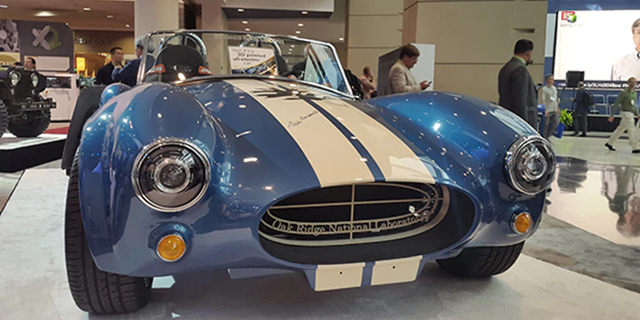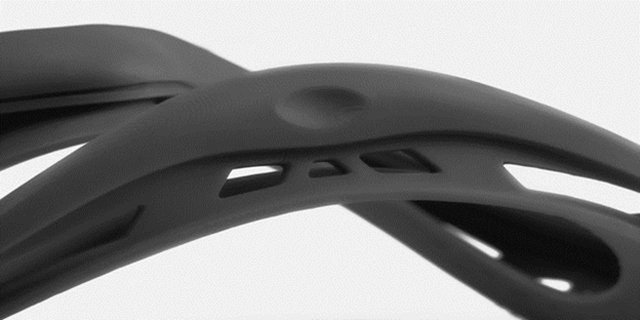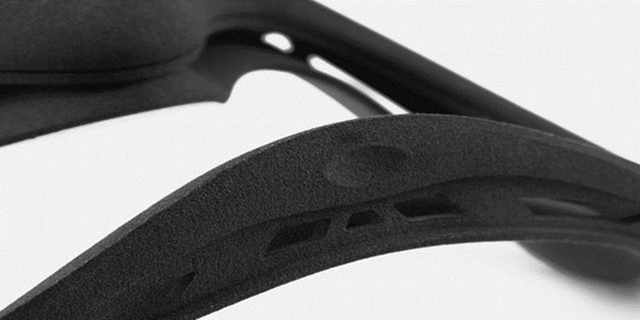With an ever-increasing demand for innovation from clients, the automotive sector faces the challenging constraints to meet these expectations. It means more financial risks for the companies to overtake. However, luckily, cutting-edge technology i.e. rapid prototyping makes it easier for companies to test out their ideas with a lower financial and technical risk. It also helps to attract stakeholders and investors towards era-changing ideas presented in prototypes in various automotive shows and exhibitions.

Why Rapid Prototyping?
Let us debate this using real-life examples to breed life into this discussion. In luxury vehicles, one of the most mesmerizing features is the chromium grill at the front. Million-dollar cars like Rolls Royce have iconic front grills to showcase their craftsmanship and finishing.
An Australian team under the name of GM Australia presented their iconic grill style as a prototype at the North American International Auto Show in Detroit, Michigan. Due to the techniques of rapid prototyping, they were able to present their prototype grill using 3D printing within three days. The techniques used for this prototyping involved the use of Selective Layer Sintering (SLS) Technology. Incorporation of this technology not only meant greater finishing but also significant cost savings. The team went on to win prestigious awards in the show.
Another notable example is Lexus’s company. Hailed as one of the luxury automotive manufacturers, the company hosts the famous Lexus Design Awards show to involve designers from all over the world to present their concept using prototyping. This eventually means more power to the company in terms of innovation and competitive advantage.
The Basic Principle
Let us now dive into the technicalities of this topic. Rapid prototyping is an additive manufacturing method. It works in association with Computer-Aided Design (CAD), Computer-Aided Manufacturing (CAM), Computer Numerical Control (CNC), Selective Laser Sintering (SLS), and other novel technologies. This technique incorporates the use of accumulation of material, unlike other fabrication techniques that use the removal of material. The technique uses layers or slices as the core concept. The processing of the 3D CAD model into a series of slices or layers of differential thicknesses comes first. In this way, layer by layer production and stacking of 2D sectional contours takes place to produce the final part. We will discuss the detailed workflow of this technique in the following section followed by its applications in the automotive industry.
The Workflow
A flowchart is always an exemplary way to depict a process. Broadly, this process has two categories i.e. generation of the information related to the mathematical model and production of the physical model. To give a clear idea of the workflow, the following flowchart will be of great importance:

Technical Comparison of Methods of Rapid Prototyping
A comprehensive comparison of the various techniques is vital for a decision-maker to shortlist viable options when using prototyping services. Selection is not only important from a cost perspective, but it also impacts the tensile strength, time for the manufacturing, and precision of the final deliverable. The descriptions are based on comparative analysis and an exclusive image goes with each technique to provide a visual analysis too.
Stereolithography
- Process: Involves the use of a UV laser beam that strikes on thin layers of liquid thermoset resin to build the supports as well as the main part. Each layer of the resin is imaged and then the next layer is similarly developed. This process repeats several times until all layers have amalgamated into a single part at the end by curing.
- Comparative Layer Resolution: Highest resolution.
- Materials: A wide array of materials. Tough, flexible, clear, and castable resins.
- Cost: Highest cost.
- Characteristics of final deliverable: Remarkable surface finish with the highest accuracy, fine details, and sturdy (high strength) parts.

Selective Laser Sintering
- Process: Involves the use of laser technology as a medium to coalesce/fuse powdered material into a solid structure. The laser carries out this sintering by heating. This is a solid to solid process with no liquefication of materials. This method can achieve high productivity.
- Comparative Layer Resolution: Less than Stereolithography but more than FDM.
- Materials: Nylon (most common), Aluminum, Steel.
- Cost: Higher cost than Fused Deposition Modeling (FDM) but a lower cost per part compared to Stereolithography. Really costly for metals. Therefore, the usage of Nylon PA11 and Nylon PA12 is common for SLS.
- Characteristics of final deliverable: High strength, good accuracy but with the need to post-process the final part for slightly rough surface finish. Very complex shapes are manufacturable with this technique. Results in excellent mechanical properties of the finished product.

Fused Deposition Modeling
- Process: Semi-liquefaction of the material. Melting and extrusion of thermoplastic resins to construct parts. A nozzle deposits the molten thermoplastic layer by layer.
- Comparative Layer Resolution: Lowest resolution (poorer than SL and SLS).
- Materials: Thermoplastics like PLA, ABS. Moreover, the usage of Nylon, wood, HIPS, and PMMA is also present.
- Cost: Cheapest. The lowest cost is one of the core factors that hobbyists use this technique of rapid prototyping to breed life into small concepts. This method is even used in 3D pens for children these days to enhance their imaginative skills.
- Characteristics of final deliverable: Good strength but lowest accuracy and precision of parts. Not viable for the production of complex shapes or parts. Layers are clearly visible. However, post-finishing (chemical and mechanical processes) can make the final deliverable more accurate.

To further support the comparison, the following table comprehensively sums up the comparison:
| Aspect | Stereolithography (SL) | Selective Laser Sintering (SLS) | Fused Deposition Modeling (FDM) |
| Cost | Highest | Less than SL but more than FDM | Lowest |
| Resolution | Highest | Less than SL but more than FDM | Lowest |
| Accuracy of deliverable | Best | Excellent | Lowest |
| Surface finish | Highest | Less than SL but more than FDM | Lowest |
| Main highlight | High-accuracy | The remarkable strength of manufactured parts | Fast & low cost |
Applications of Rapid Prototyping in the Automotive Industry
Engine Research and Development
The complexity and intricacy of engine parts are two of the foremost factors in consideration. This is why the use of the Selective Laser Sintering (SLS) method is common in engine research and development. The prototyping and manufacturing of complex parts, that constitute the proper functionality of an engine like cylinder block, cylinder head, intake and exhaust valves, and various other components, are carried out by SLS technology. Engine parts are really sensitive to minute defects and therefore accuracy is one of the foremost considerations. Not only accuracy but also the mechanical strength of manufactured parts is a key metric and SLS caters to it.
Particularly, the accuracy needed in the manufacturing of intake valves is of monumental importance. Intake efficiency, improvement of the combustion process are two of the many factors affected by the surface finish, and accuracy of inlet valves.
As far as prototyping is concerned in engine R&D, an example will serve as an important factor for understanding. During the design cycle of engine parts, the research team works on testing various inlet valve designs for air intake trials. Unlike traditional methods which require the production of several intake valves with different cross-sections to land at the optimal choice, rapid prototyping makes the design cycle more systematic and resounding. It uses CAD models, flows analysis using Computational Fluid Dynamics, and consequently, prototyping the most impactful design in terms of efficiency, emissions, and cost.
Moreover, the SL method enables the rapid production of new engine models using transparent resin materials. Thus, the laser photography method is then used to study the various characteristics of the prototype engine as transparent resin materials can cater to flow analysis using laser photography technology.
Die Manufacturing
Automobiles have a large number of parts that are made by casting, molding, forging, and various other techniques. While these production techniques might be very fast, but the initial design of the die is slow.
Techniques like FDM serve as an initial die design and testing medium and SLS serve as quickly producing finalized dies for rapid manufacturing and shortening production cycles. Every industry is profit-motivated and so every minute impacts profit margins and revenue generation.
To add to this, rapid tooling is a new area of research and development in this niche. Conventional machining techniques like lathe, milling, and shaping require the use of cutting tools. The accuracy of these cutting mediums is really important. Thus, rapid tooling technology comes into play and with its accuracy, techniques like SLS play a pivotal role.
Design for Assembly (DFA) and Design for Manufacturability (DFM)
Assembly, disassembly, tolerances, clearances, appearance, tooling; all of these aspects play a major role in determining the production and market viability of a product. Although computer modeling and simulations serve the purpose of determining all the aforementioned aspects, an investor or stakeholder will always trust in having a hands-on experience of the product.
Design for Assembly and Design for Manufacturability are two key aspects in the design and production cycle. Progressive automotive industry companies are diving deep into a systematic use of rapid prototyping for increasing profit margins and attracting investments.
First, researchers use techniques like FDM at an entry-level of the design cycle to discuss prospective ideas. For instance, a novelty in fighter jet designs is often first presented using 3D printed prototypes using FDM.
The second stage involves the use of a finer technique if the discussion from the first stage bore fruit. Metrics for DFA and DFM are tested at this stage and likewise, a systematic move towards final production designs begins.
Thus, in the light of the aforementioned discussion, it is clearly evident how monumental is the use of rapid prototyping services for the automotive industry and for other industries, too.
With over 20 years’ experience of rapid prototyping in the automotive industry, we are specialized in machining various automotive lighting prototypes, custom CNC auto parts with low volume production. If you need any help with the next project, please don’t hesitate to contact us.




